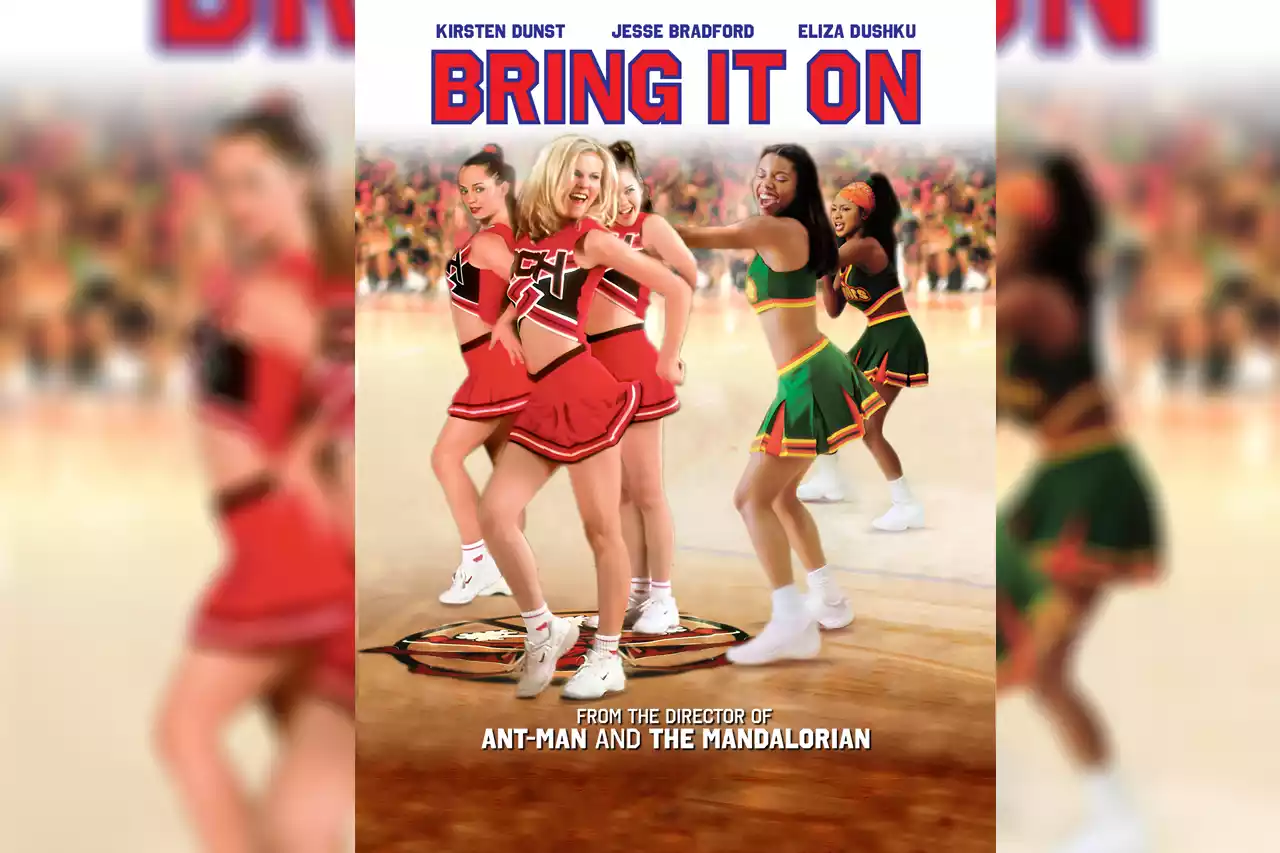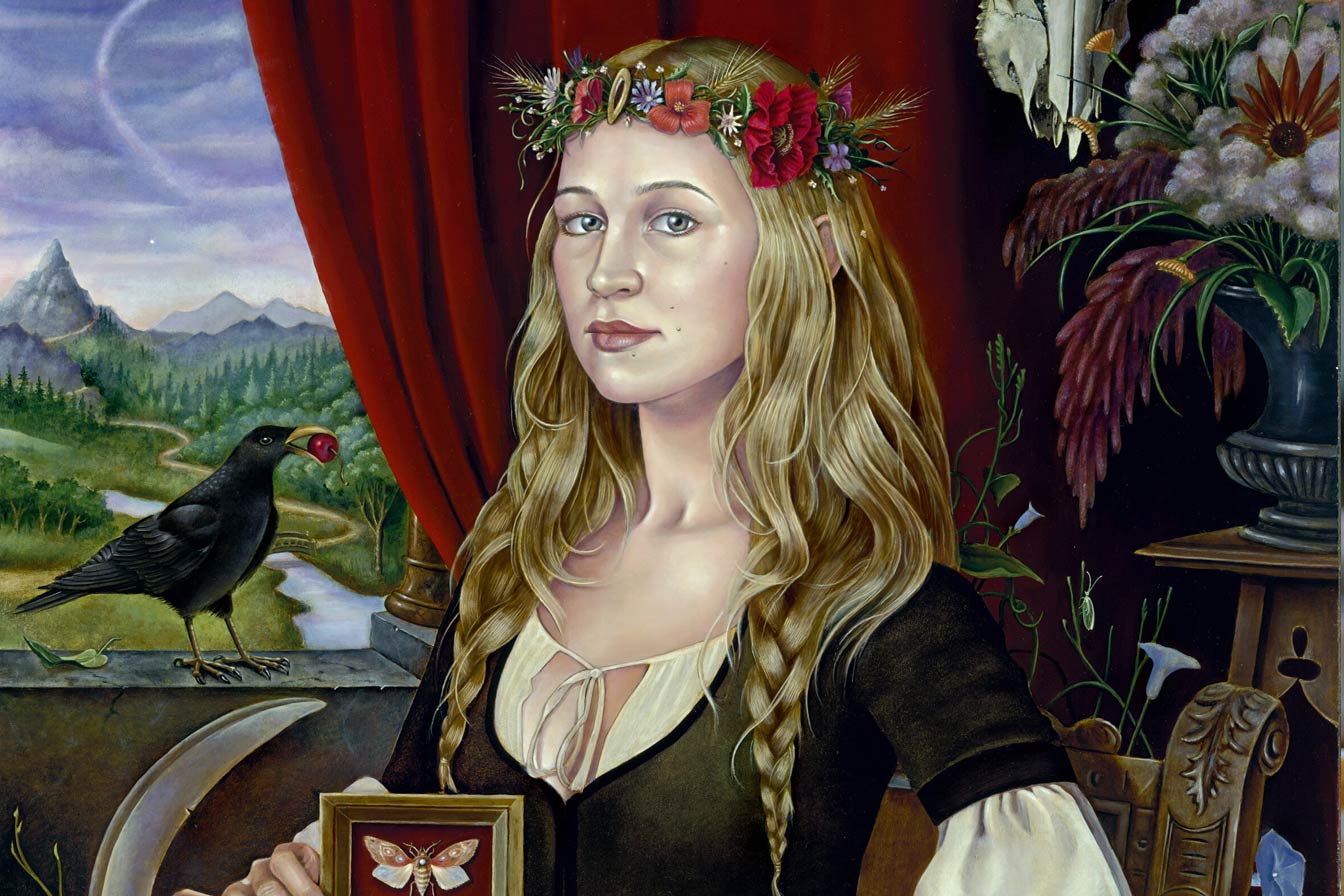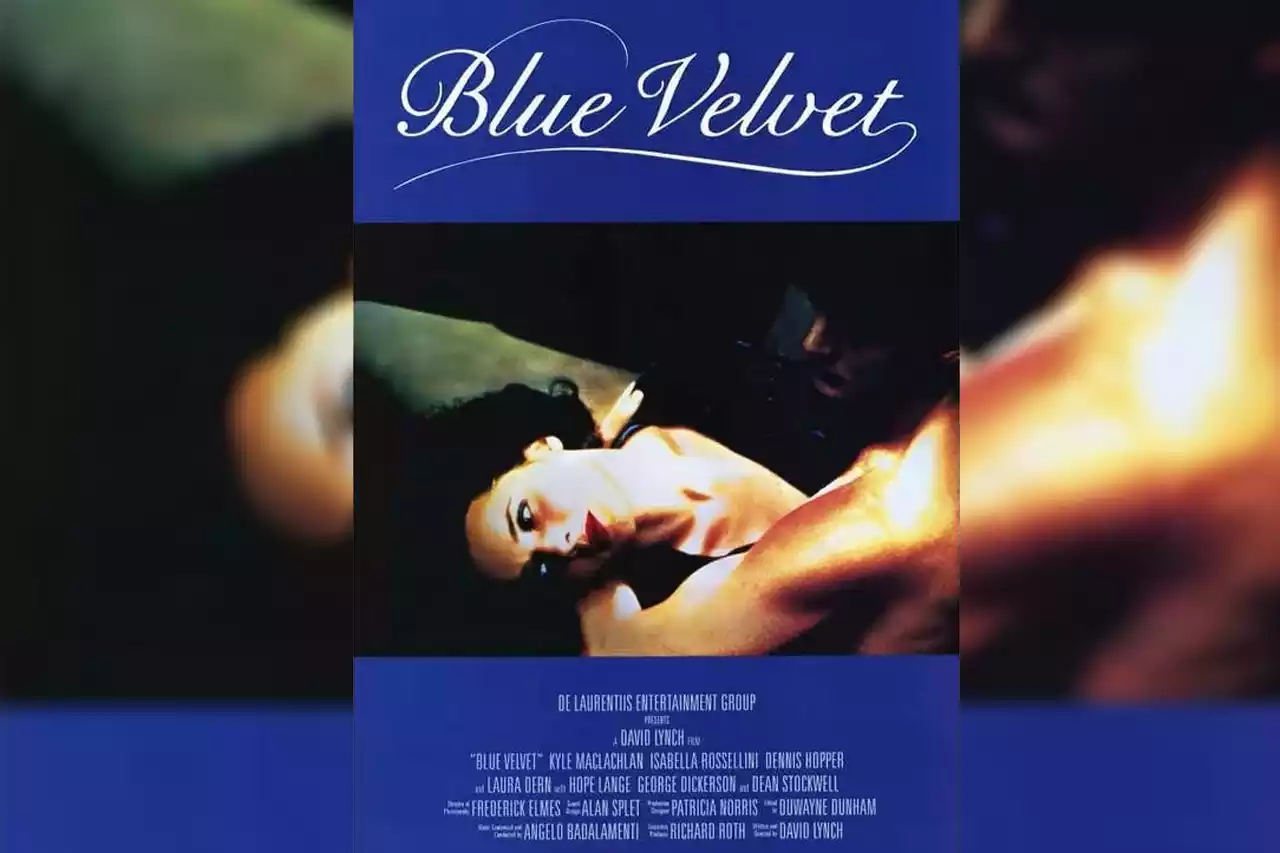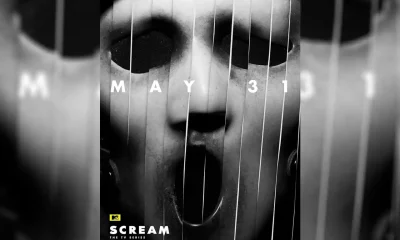Entertainment
Movie Review: Bring it On

Hey there, movie buffs! 🎥 Are you ready to revisit a classic that’s all about high energy, sass, and cheerleading showdowns? Let’s talk about “Bring It On” (2000), a movie that’s been flipping and jumping in our hearts for over two decades! Is it still the pop-culture cheerleader we remember, or has it lost its sparkle? Let’s dive in!
The Storyline – A Cheerful Ride!
First things first, let’s recall the plot! “Bring It On” stars Kirsten Dunst as Torrance Shipman, the newly-appointed captain of the Rancho Carne High School cheerleading squad, the Toros. She’s peppy, she’s driven, and she’s determined to lead her team to their sixth consecutive national title. But there’s a twist – their perfect routines were stolen from the East Compton Clovers, a talented squad led by the fierce Isis (played by Gabrielle Union). The movie takes us on a spirited journey filled with competition, friendship, and self-discovery.
Does It Still Hold Up?
So, the big question – does “Bring It On” still hold up after all these years? Absolutely! It’s like opening a time capsule to the year 2000, filled with early-aughts fashion, catchy cheers, and a whole lot of attitude. The humor? Still hilarious. The performances? Totally on point. It’s a nostalgia trip that feels fresh even today.
Why It’s Still a Gem
What makes “Bring It On” so endearing after all these years is its timeless themes. It’s about more than just cheerleading; it’s about integrity, friendship, and respecting your competition. Torrance’s journey towards understanding the importance of originality and hard work resonates just as strongly today. And let’s not forget the dynamic between the Toros and the Clovers, showcasing rivalry with respect and admiration.
For the Laughs and the Cheers
If you’re in for a good laugh, “Bring It On” has got you covered. The witty one-liners and hilarious scenarios are a big win. And the cheer routines? They’re as energetic and impressive as ever. Whether you’re a cheer enthusiast or just love a good comedy, this movie has something for everyone.
Who Will Love It?
This movie is a perfect pick for a girls’ night in, especially if you’re into early 2000s nostalgia. It’s also great for those who appreciate a good sports film with a twist. And let’s not forget the younger crowd who might be watching it for the first time – they’re in for a treat!
The Impact and Legacy
It’s not just about the laughs and cheers; “Bring It On” has left a lasting impact on pop culture. It’s a movie that sparked a whole series of sequels and even a musical. The film’s portrayal of competitive cheerleading helped popularize the sport and brought it into mainstream media. It’s a testament to how a fun, lighthearted movie can leave a lasting impression.
The Cast – Then and Now
Part of the fun in rewatching “Bring It On” is seeing actors like Kirsten Dunst and Gabrielle Union in their early roles. They brought such energy and charisma to their characters, setting the stage for their successful careers. Watching it now, it’s a delightful throwback and a reminder of where these talented actors started.
Soundtrack – Still Bopping!
Let’s not forget the soundtrack! With its mix of pop and rock, the “Bring It On” soundtrack is as catchy today as it was back then. It’s a perfect backdrop to the high-energy cheer routines and adds an extra layer of fun to the movie.
Style & Fashion – Early 2000s Galore
Fashion alert! The early 2000s style in “Bring It On” is a blast from the past. From the cheer uniforms to the casual outfits, it’s a nostalgic journey through the trends of the time. It’s a fun, visual representation of the era, adding to the movie’s charm.
Bottom Line – A Must-Watch!
In conclusion, “Bring It On” is more than just a cheerleading movie; it’s a pop-culture staple that has stood the test of time. With its blend of humor, heart, and high-flying cheer stunts, it’s a film that continues to entertain and inspire. So grab your pom-poms, gather your squad, and get ready to cheer on this timeless classic!
Rating: 🎉🎉🎉🎉 (4 out of 5 party poppers)
Till next movie night, Kelly.
Entertainment
Joanna Newsom’s Ys: Discover the Enchanting World of This Hidden Gem Album You’ve Been Missing

If you’ve ever wished you could stumble upon a magical, hidden world filled with whimsical stories and dreamy sounds, you’re in luck. Joanna Newsom’s album Ys is exactly that: an enchanting musical adventure you’ve probably never heard of—but totally should! While it may not be mainstream, this hidden gem is perfect for when you’re ready to discover something that feels like stepping into a secret, fairytale-like universe. Ready to dive in? Let’s go!
Who is Joanna Newsom?
Joanna Newsom might not be a name you recognize yet, but trust us, she’s an indie music queen in her own right. Imagine a singer, songwriter, and harpist (yes, harpist—how cool is that?) all wrapped into one, and you’ve got Joanna. Her music is often labeled as folk but before you roll your eyes and think of your grandpa’s record collection—wait. Just because she’s considered a folk artist doesn’t mean she has anything in common with geezers like Joni Mitchell or that sometimes-creepy guy Bob Dylan. Joanna Newsom’s music is fresh, whimsical, and completely unique.
Her voice? Quirky, high-pitched, and full of emotion. Her lyrics? Like reading the most poetic storybook ever. And with her album Ys, she took things to a whole new level by teaming up with a legendary composer to create something that feels like stepping into a dreamy soundtrack. So, if you’re looking for something different—and way more magical than anything on the charts—Joanna Newsom is about to be your new fave.
What Makes Ys Special?
Now, let’s talk about Ys, the album you never knew you needed. First off, this is not your average playlist of quick-hit bangers. Nope, Ys is an experience. Each of the five songs on this album takes you on a journey, like a musical adventure filled with storytelling, emotions, and rich orchestral sounds that make you feel like you’ve entered another world.
Every song on Ys is long and intricate, but don’t let that scare you! It’s like watching a really good movie—you get pulled into the story and don’t want it to end. Joanna weaves fairytale-like lyrics with deep emotions, so each track feels like its own little universe. Whether she’s singing about relationships, nature, or mythical characters, there’s something captivating in every note. It’s basically an album that turns music into magic.
Song Highlights You’ll Love
Now, let’s break down a few songs that’ll get you hooked:
Emily
This epic opener feels like a love letter to Joanna’s sister but with some beautiful celestial imagery thrown in. It’s personal and poetic—perfect for a late-night listen when you’re feeling all the feels.
Monkey & Bear
Get ready for a fable-like story about a bear and a monkey trying to escape their life of captivity. It’s like a dark fairytale with a catchy twist, and if you love animated movies with deeper meanings (hint: Animal allegories), this one’s for you.
Sawdust & Diamonds
This one is an emotional rollercoaster. It’s just Joanna and her harp, pouring her heart out in a way that feels both raw and magical. You’ll feel like you’re watching someone create art right in front of your eyes (or ears, in this case).
Only Skin
Okay, this track is long—like, really long. But it’s filled with so many twists, turns, and breathtaking moments that it’s totally worth the journey. It’s basically the fantasy novel of songs, and you’ll get lost in its beauty.
Cosmia
This song closes out the album in a dreamy, haunting way. It’s one of those tracks that sticks with you long after the last note fades.
Why Ys is the Perfect Album for When You Need to Escape
Feeling overwhelmed by life, school, or social media? Ys is like a mini-vacation for your mind. Joanna’s voice and the lush, orchestral arrangements make you feel like you’ve stepped into a world far away from the everyday hustle. Whether you’re doing homework, taking a break, or just daydreaming about magical places, Ys is the perfect soundtrack to transport you to a world where you can forget about everything and just be.
Plus, it’s a nice break from the short, snappy songs that fill our playlists. Sometimes, it’s nice to just *sit* with a piece of music and let it take you on a journey—and *Ys* does just that.
How to Enjoy *Ys* Without Feeling Overwhelmed
If the idea of five long, intricate songs feels a little intimidating, don’t stress! Here’s a tip: listen in parts. You don’t have to sit down and absorb the entire album in one go. Start with a single track—maybe *Emily* or *Monkey & Bear*—and just let it play while you’re relaxing. You can always come back to the rest later when you’re ready for more.
It’s also totally okay if you don’t “get” everything right away. The beauty of *Ys* is that it reveals itself in layers. The more you listen, the more you’ll discover in the lyrics and melodies. So take your time, and don’t worry if it feels a bit different from your usual music—it’s all part of the magic.
A Few Fun Facts About Ys That Will Make You Love It More
Want to know something cool? The album’s orchestral arrangements were done by Van Dyke Parks, a legendary composer who’s worked with some of the biggest names in music. The cover art? It’s as dreamy and detailed as the music itself, with a fairytale-like illustration that captures the album’s vibe perfectly.
And Joanna’s voice? It’s quirky, and some might even call it odd, but that’s exactly what makes her stand out from the crowd. She’s not afraid to be different—and that’s why we love her.
Bottom Line: Why Ys Deserves a Spot on Your Playlist
So, why give Ys a shot? Because it’s like discovering a hidden world full of magic, emotion, and beauty—all wrapped up in a musical package. It might take a little time to get into, but once you do, you’ll wonder how you ever missed this hidden gem. Next time it’s raining outside or you’re in need of some chill vibes, put on Ys and let Joanna Newsom take you somewhere truly special. You might just find your new favorite album for those quiet, dreamy nights.
Entertainment
Blue Velvet: Unraveling the Mystery!

A Dark Underworld in Lumberton
Set in the seemingly idyllic town of Lumberton, Blue Velvet follows the story of Jeffrey Beaumont (Kyle MacLachlan), who stumbles upon a severed ear in a field. Yep, you read that right – an ear! This discovery catapults him into a dark underworld lurking beneath Lumberton’s white-picket fence surface. Enter the enigmatic lounge singer, Dorothy Vallens (Isabella Rossellini), and the menacing Frank Booth (Dennis Hopper), who will give you all the creepy vibes you can handle!
Is It Too Creepy, or Just Perfect?
Now, let’s get real – this movie isn’t for the faint of heart. It’s classic Lynch, mixing dream-like sequences with harsh reality, and yes, it gets super creepy. But that’s the beauty of it! It’s a wild ride that challenges your perception of good and evil, reality and illusion. The big question is, can you handle it? 🤔
Performances and Lynch’s Signature Style
For those of you who love a good psychological thriller, Blue Velvet is a masterpiece. The way Lynch plays with themes of innocence and corruption is nothing short of genius. And let’s not forget the amazing performances. Kyle MacLachlan is perfect as the boy-next-door turned amateur detective, while Isabella Rossellini’s portrayal of the tormented Dorothy is both haunting and heart-wrenching.
The Lynchian Universe: From Lumberton to Twin Peaks
But where does Blue Velvet fit in the grand scheme of Lynch’s work? Think of it as a stepping stone to his later works like Twin Peaks and Mulholland Drive. It’s got all the Lynch trademarks – eerie settings, a haunting soundtrack, and that surreal, dream-like quality that makes you question everything.
Visual Aesthetics and Symbolism
Let’s chat a bit more about the vibes in Blue Velvet. If you’re into aesthetics, this movie is a visual feast. The contrast between the bright, picturesque town and the dark, twisted underworld is visually stunning. The cinematography is top-notch, creating a mood that’s both dreamy and nightmarish. And the soundtrack? It’s classic Lynch – eerie, atmospheric, and totally mesmerizing.
For those who dig a little deeper, there’s a ton of symbolism and hidden meanings in Blue Velvet. It’s like a puzzle waiting to be solved. Every scene, every line of dialogue, and every character has a purpose. It’s a film that encourages multiple viewings, and trust me, you’ll want to watch it more than once to catch all the nuances.
Lumberton and Twin Peaks: A Cinematic Connection
Now, let’s talk about something intriguing – could the setting of Blue Velvet, the quaint town of Lumberton, be a low-key prelude to Lynch’s iconic TV series, Twin Peaks? The similarities are definitely there. Both Lumberton and Twin Peaks are small, seemingly innocent towns with dark, twisted secrets lurking beneath the surface. The way Lynch portrays these towns makes you question what’s really going on behind closed doors in small-town America.
The atmosphere in both Blue Velvet and Twin Peaks is eerily similar. They both have this blend of Americana with a surreal, dream-like quality that’s quintessentially Lynch. It’s almost like Lumberton was a testing ground for the ideas and themes that would later be fully realized in Twin Peaks. The exploration of the duality of human nature, the blend of the mundane with the bizarre, and the examination of the darkness hiding in plain sight – all these elements in Blue Velvet feel like a precursor to the larger canvas of Twin Peaks.
Final Thoughts
Overall, Blue Velvet is a cinematic gem that’s both timeless and groundbreaking. It’s a film that defies conventional storytelling and takes you on a journey that’s unforgettable. So, if you’re looking for a movie that’s out of the ordinary, this is it. Remember, in the world of David Lynch, expect the unexpected!
In conclusion, Blue Velvet is a Lynchian masterpiece that’s equal parts disturbing and captivating. It’s perfect for those who love to delve into the darker side of cinema and appreciate films that make you think. This is one movie that truly stands the test of time and showcases Lynch’s unique vision. So grab some popcorn, keep an open mind, and dive into the enigmatic world of Blue Velvet!
Rating: 👂🏻👂🏻👂🏻👂🏻👂🏻 (5 out of 5 severed ears)
Till next movie night, Kelly.
Entertainment
Tuning Into Nostalgia: The Story of American Top 40

Picture this: it’s the mid-1980s, a Saturday morning. You’re lounging in your room, the warm glow of the sun peeking through the curtains. A radio sits on the bedside table, the dial set to your favorite station. Suddenly, a familiar voice fills the room – it’s Casey Kasem, and “American Top 40” is about to begin. In a world before Spotify playlists and Apple Music, this show wasn’t just a program; it was an event, a weekly ritual that connects you to the pulse of American pop culture.
For today’s music fans, accustomed to instant access to any song at any time, the concept of waiting a whole week to hear the top hits might seem quaint, even alien. But “American Top 40,” with Kasem’s iconic voice, was the heartbeat of a different era. It was a time when the radio wasn’t just a medium; it was a communal experience, a connection to a world bigger than your own. This was a time when music wasn’t just heard; it was felt, and shared in a way that modern streaming can’t quite replicate.
In this journey back to the days of Casey Kasem’s “American Top 40,” we’ll explore how this syndicated radio show captivated listeners, shaped careers in the music industry, and became a beloved part of American pop culture history. Get ready to discover how a weekly radio show became a cultural icon and why its legacy continues to resonate in our current era of digital music and internet-enabled media. We are going DEEP on this one!
The Era of Syndicated Radio Shows
Imagine a world without instant streaming, where the thrill of discovering new music depended on the whims of radio DJs and the power of broadcast networks. This was the era of syndicated radio shows, a golden age in American pop culture that laid the foundation for how we consume music today. For you, who are seamlessly connected to the world of digital music, stepping into the world of syndicated radio shows is like opening a time capsule.
Syndicated radio shows were not just about playing music; they were cultural phenomenons that transcended geographical boundaries. Unlike local radio programs that catered to a specific area, syndicated shows were broadcast nationwide, allowing listeners from coast to coast to tune into the same content at the same time.
This unification of listeners created a shared musical experience, a national conversation centered around the latest hits and emerging artists.
In the era before social media and internet forums, these shows were the epicenter of music discovery and discussion. They were the influencers of their time, dictating trends and shaping public opinion on music. Hosts like Casey Kasem didn’t just play songs; they were storytellers, narrating the journey of each track as it climbed up or fell down the charts. Their commentary provided context and color to the music, making each episode an immersive experience.
The impact of these shows was immense. They didn’t just entertain; they informed. They were the curators of the musical landscape, and their influence extended beyond the airwaves. The popularity of a track on these shows often determined its commercial success. A top spot on a show like “American Top 40” could catapult an artist to stardom, while a steady presence on the charts could sustain a career.
Moreover, syndicated radio shows played a crucial role in the democratization of music. They broke down regional barriers, allowing artists from all corners of the country to reach a national audience. This exposure was pivotal in the emergence of new genres and the evolution of existing ones, as artists were inspired by sounds and styles from across the nation.
For a generation raised on the immediacy of digital streaming, the concept of syndicated radio might seem archaic. Yet, it’s important to recognize its significance in the lineage of music distribution. These shows were the precursors to today’s playlists and algorithms, the original trendsetters that brought diverse music to the masses. They were a testament to the power of radio and its ability to bring together a nation under the banner of music.
Casey Kasem: The Voice That Defined a Generation
To truly understand the impact of “American Top 40,” one must first recognize the man behind the microphone – Casey Kasem. His voice, warm and familiar, was more than just a sound on the radio; it was the soundtrack to an entire generation. In a time before the internet and social media influencers, Kasem was a trusted voice in American pop culture, a guide through the ever-changing landscape of music. For today’s generation, who are accustomed to a plethora of digital voices and choices, Kasem represents a singular presence, a unifying force in a fragmented media landscape. If Casey Kasem said it, we believed it!
Born Kemal Amin Kasem in 1932, Casey Kasem’s journey into radio was fueled by a passion for music and a distinct, clear voice that would soon become his trademark. His career spanned decades, but it was with the inception of “American Top 40” in 1970 that Kasem found his true calling. The show, which counted down the top 40 songs in the country each week, was more than just a list; it was a narrative of what America was listening to, loving, and living. Kasem didn’t just announce the songs; he connected them to listeners’ lives through stories, dedications, and insights.
Kasem’s approach to hosting was revolutionary. He infused each broadcast with personal anecdotes, historical contexts, and a genuine enthusiasm for music. This style resonated with listeners, making him a household name. Kasem had a unique ability to make each listener feel like they were part of a larger community, sharing in the collective experience of music discovery. His sign-off line, “Keep your feet on the ground and keep reaching for the stars,” became iconic, encapsulating the hopeful and aspirational spirit of his audience.
But Casey Kasem was more than just a voice on the radio; he was an advocate for the artists and the music he played. He championed new talents, gave context to songs, and often highlighted the lesser-known stories behind the hits. His influence in the music industry was profound; a mention or feature on “American Top 40” could propel an artist to national recognition. Kasem understood the power of radio and used it to shape the musical tastes of a nation.
For a generation that experiences music through algorithmically curated playlists and personalized streams, the idea of a single voice curating the musical narrative of a nation might seem unimaginable. Yet, this was the reality of Kasem’s era. He was a tastemaker, a storyteller, and a companion to millions of listeners. His impact on American pop culture and the music industry is indelible, and his legacy continues to inspire broadcasters and music enthusiasts alike.
American Top 40: The Weekly Ritual
In the labyrinth of today’s digital music world, where any song is just a click away, it’s hard to imagine a time when music was experienced more communally and less instantaneously. “American Top 40,” a syndicated radio show hosted by Casey Kasem, was more than just a program; it was a weekly ritual, eagerly anticipated by millions of listeners across the United States. For young people today, understanding this ritual opens a window into a period of American pop culture history that seems almost foreign in the age of streaming services and personalized playlists.
Every week, “American Top 40” offered a consistent and exciting routine. Families, friends, and individuals would tune in religiously, their ears glued to the radio, awaiting Casey Kasem’s charismatic countdown of the nation’s most popular songs. The show’s format was simple yet captivating: starting from number 40 and slowly making its way to that coveted number one spot. It was a musical journey that kept listeners hooked, offering a mix of suspense, excitement, and joy as they wondered if their favorite track would make it to the top.
But it wasn’t just about which song was number one; it was the entire experience. Kasem’s voice, with its warm, friendly tone, created a sense of intimacy and connection. He wasn’t just a host; he was a friend, a storyteller who brought songs to life with engaging anecdotes.
These segments, often personal and touching, added a human element to the charts, making the show more than just a list of songs but a tapestry of human emotions and stories.
Before the era of digital recording, teenagers would sit by their radios with cassette tapes ready to record their favorite songs. This ritual of recording, rewinding, and listening was a cherished part of the music experience. It required effort and patience, unlike today’s instant streaming. This act of recording not only allowed listeners to relive their favorite tunes but also served as a personal archive of musical memories, each cassette a time capsule of a particular moment in their lives.
The impact of “American Top 40” went beyond entertainment. It was a cultural touchstone, a shared experience that connected people across the nation. In an era before social media and online communities, this show was a unifying force, bringing together people of all ages and backgrounds in their love for music. The anticipation for each week’s show, the communal listening, and the excitement of discovering new music or hearing a beloved song climb the charts, all contributed to a collective musical consciousness.
Today, as we navigate a world where music is ever-present and readily available, reflecting on the phenomenon of “American Top 40” offers insights into a bygone era. It reminds us of the power of radio, the joy of shared experiences, and the enduring impact of a weekly musical ritual that defined an entire generation.
The Power of the Top 40
In the modern era, where streaming platforms provide endless playlists and personalized music recommendations, it might be difficult for young women today to grasp the monumental influence of the Top 40 chart in shaping the music industry. However, during the heyday of “American Top 40,” this weekly countdown wasn’t just a list of songs; it was a powerful barometer of musical success and a driving force in the careers of artists.
The Top 40 chart, as popularized by Casey Kasem’s show, was more than a mere ranking of songs based on sales and airplay. It was a reflection of what America was listening to, a snapshot of the nation’s musical heartbeat. Being featured on this list meant recognition and exposure on a national scale. For artists, securing a spot on the Top 40 was a coveted achievement, often seen as a stepping stone to greater commercial success and wider recognition.
Landing in the Top 40 could catapult an emerging artist into the limelight, transforming them from relative unknowns to household names almost overnight. For established artists, maintaining a presence on the chart was a testament to their enduring popularity and relevance in an ever-evolving music landscape. The impact of charting on the Top 40 went beyond mere bragging rights; it had tangible effects on an artist’s career, influencing record sales, concert attendance, and overall marketability.
Moreover, the influence of the Top 40 extended to the music industry at large. Record labels and producers closely monitored the chart, using it as a guide for identifying trends, investing in new talents, and developing marketing strategies. The chart’s power was such that it could shape the direction of the music industry, with genres rising or falling in popularity based on their representation in the Top 40.
The weekly anticipation of which song would top the chart created a shared cultural experience. It was a topic of conversation in schools, workplaces, and homes across the country. Fans would rally behind their favorite songs and artists, celebrating their successes and lamenting their falls from the chart.
This collective engagement with music, driven by the Top 40, fostered a sense of community and belonging among listeners.
Beyond Radio: American Top 40’s Influence on Television
The cultural impact of “American Top 40,” hosted by Casey Kasem, extended far beyond the realms of radio, leaving an indelible mark on television as well. In an era where today’s music fans are accustomed to streaming their favorite shows on-demand, it’s intriguing to look back at how a radio show could transition to and influence television, a medium that was then, as it is now, a cornerstone of American entertainment.
The transition of “American Top 40” from radio waves to TV screens was a testament to the show’s massive popularity and the charisma of its host. The format of counting down the top songs of the week was not only successful on radio but also translated well to television, where visuals added a new dimension to the musical experience. Television adaptations of the show brought the music and artists directly into living rooms, allowing viewers to not only hear but also see the performers, deepening the connection between artists and audiences.
One of the most significant TV spinoffs inspired by the American Top 40 format was the iconic “MTV Top 20 Video Countdown.” This show, much like its radio counterpart, showcased the most popular music videos of the week, creating a visual spectacle for viewers. The popularity of these countdown shows on television was a clear indication of the Top 40’s powerful influence in shaping music tastes and trends across different media platforms.
Moreover, the presence of Top 40-inspired shows on television played a crucial role in the evolution of the music video industry. Artists began to realize the potential of music videos as a tool not just for artistic expression, but also for marketing and audience engagement. The rise of visually driven music content on TV, bolstered by the success of Top 40 formats, paved the way for the music video revolution of the 1980s and beyond.
The influence of “American Top 40” on television also extended to the way music was integrated into other TV programs. Variety shows, talk shows, and even sitcoms began to feature more musical content, often highlighting popular songs and artists that dominated the Top 40 charts. This integration further cemented the role of music in American pop culture, making it an essential component of television entertainment.
The Science Behind the Hits: Billboard’s Ranking Methodology
For the modern music enthusiast, accustomed to the algorithm-driven landscapes of Spotify and Apple Music, the methodology behind Billboard’s ranking of hits may seem like a relic from a bygone era. Yet, understanding this methodology is crucial to appreciating the cultural significance of “American Top 40” and the landscape of music distribution during its heyday. Billboard’s charts, particularly the Hot 100, served as the basis for “American Top 40’s” weekly countdowns and played a pivotal role in defining what America listened to.
Billboard’s ranking system was a complex blend of various metrics that aimed to capture the most popular songs in the country. Initially, the rankings were based primarily on record sales and radio airplay. Record sales data was gathered from music stores, providing a tangible measure of a song’s commercial success. Radio airplay, on the other hand, reflected the frequency with which songs were played on radio stations, indicating their popularity among listeners and radio programmers alike.
As technology and media consumption habits evolved, so did Billboard’s methodology. The advent of online music streaming and digital downloads introduced new metrics into the equation. These changes reflected the shifting ways in which audiences accessed and enjoyed music, ensuring that the Billboard charts remained relevant and accurate barometers of musical popularity.
More Than Just a Playlist: Educational and Entertaining Segments
To a generation raised on the instant gratification of streaming services, the concept of a radio show being both educational and entertaining might seem quaint. Yet, “American Top 40” with Casey Kasem was precisely that – a show that transcended the typical boundaries of a playlist, offering listeners not only music but also a wealth of knowledge and entertainment through its various segments. These elements played a crucial role in engaging the audience and contributed to the show’s enduring popularity and influence.
One of the show’s most beloved features was Kasem’s insightful introductions to songs. Unlike the algorithmic introductions of today’s digital platforms, Kasem’s narratives were personal, informative, and often filled with intriguing anecdotes about the artists or the songs themselves. This approach not only enhanced the listening experience but also educated the audience about the music industry, artist backgrounds, and song inspirations. It brought a depth to the music that went beyond the mere listening of the track.
Another iconic element of “American Top 40” was the long-distance dedications. Listeners would write to the show, often with heartfelt stories, requesting songs to be played for loved ones far away. These segments added a human touch to the show, connecting people through music and shared stories. It was a precursor to social media’s way of connecting people, but with a more personal and intimate touch. The long-distance dedications were not just about the music; they were about the stories and emotions that the music evoked.
The show also featured segments that addressed listener questions about music trivia, artist information, and industry facts. These interactions made the audience feel involved and valued, and turned the show into a source of musical education. In a sense, “American Top 40” was like an auditory encyclopedia for music enthusiasts, providing valuable information that was otherwise hard to come by in the pre-internet era.
Moreover, “American Top 40” fostered a sense of community among its listeners. The shared experience of tuning in every week, of hearing familiar segments and participating in the show’s interactive elements, created a bond among listeners. This community aspect is something that today’s individualized streaming services can’t quite replicate. The show was not just a passive listening experience; it was an active engagement with music and fellow music lovers.
Casey Kasem’s Legacy
The legacy of Casey Kasem, the iconic voice behind “American Top 40,” stretches far beyond his years on the air. His impact on radio broadcasting and American pop culture resonates even today, offering a glimpse into the evolution of music distribution for our audience of 15-25 year old women, who experience music in a significantly different way compared to the era of Kasem’s prominence.
Kasem’s tenure on “American Top 40,” which spanned from 1970 to 2004, was marked by his distinctive broadcasting style, blending music with storytelling. His approach to presenting music — complete with background stories, artist insights, and personal touches — set a standard for radio shows. Kasem’s influence extended beyond the airwaves, as he shaped the way music was presented and appreciated. His narrative style turned the listening experience into a journey, making each song more than just a track but a story to be shared and cherished.
After Kasem stepped down, “American Top 40” continued with new hosts, each bringing their own style to the show. Ryan Seacrest, the current host, has continued the legacy in the modern era, adapting the show to fit the evolving landscape of music consumption. While the essence of counting down hits remains, the show now incorporates digital streaming data and online listener engagement, reflecting the shift from radio to digital platforms as the primary means of music consumption.
Wrapping this Up
Congrats for making it this far! It’s not easy trying to summarize something as HUGE as this pop culture phenomenon As we conclude our journey through the history of “American Top 40” and its legendary host, Casey Kasem, it’s evident that this show was more than just a weekly countdown of hits. For today’s readers, exploring this slice of American pop culture history offers not only a nostalgic look back but also a deeper understanding of how the music industry has evolved from radio to the digital age. “American Top 40” was a cultural phenomenon that connected millions of listeners, shaped musical tastes, and left an indelible mark on the entertainment world.
The legacy of Casey Kasem and “American Top 40” reminds us of the power of storytelling in music, the importance of human connection in media, and the enduring impact of shared cultural experiences. As we navigate an era dominated by streaming services and individualized playlists, reflecting on the communal and interactive nature of “American Top 40” highlights what we have gained and what we may have lost in the transition to digital music consumption.
Want to listen to some throwback episodes of American Top 40? You’re in luck as there’s a handful of episodes available on YouTube. Check out this channel (hopefully still online!) and here’s a sample episode from 1986.
-

 Fashion1 year ago
Fashion1 year agoTen Edgy Office Looks 🔥👠
-

 Beauty2 years ago
Beauty2 years agoGel vs. Acrylic: Which Manicure Type Suits You Best? 💅
-

 Entertainment1 year ago
Entertainment1 year ago🔪 Scream: Still a Killer Watch? 👻
-

 Fashion2 years ago
Fashion2 years agoPerfume: A Shy Student’s BFF 🌸
-

 Success Tips2 years ago
Success Tips2 years agoDecoding the Tinder Algorithm: How to Increase Your Visibility and Matches
-

 Relationships2 years ago
Relationships2 years agoPressing Pause: Stopping Physical Intimacy Inside a Relationship 🚫❤️🔥
-

 Health2 years ago
Health2 years agoDo Waist Trainers Actually Work?
-

 Relationships2 years ago
Relationships2 years agoWhoops I kissed my BFF 💋










